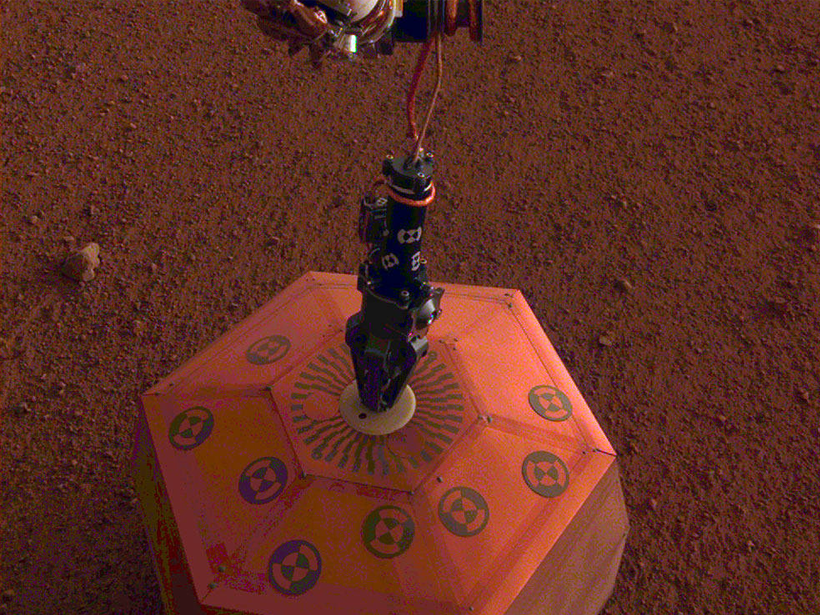Planetary scientists are quivering with delight at the first detection of possible seismic activity beneath Mars’s surface. This potential marsquake was recorded by NASA’s Interior Exploration using Seismic Investigations, Geodesy and Heat Transport (InSight) lander 128 Martian days (sols) after landing.
“We’ve been waiting months for our first marsquake,” Philippe Lognonné, a geophysicist at Paris Diderot University in France and the principal investigator for InSight’s seismometer, said in a statement about the discovery. “It’s so exciting to finally have proof that Mars is still seismically active. We’re looking forward to sharing detailed results once we’ve studied it more and modelled our data.”
The news of the first recorded marsquake was revealed on 23 April at the Seismological Society of America conference in Seattle, Wash. This is the first seismic event recorded on another planet. You can listen to a recording of the marsquake signal in the video below.

Just a Little Shake
InSight landed on Mars in Elysium Planitia on 26 November 2018. One of the mission’s main science goals is to measure how seismically active Mars is today. This information will provide clues about how Mars’s interior is cooling and contracting, giving a glimpse at the internal structure of the planet.
On its 128th sol (6 April on Earth) on the surface, InSight detected shaking from a small underground tremor. The signal was so small that had it occurred on Earth, it would have been lost among the background seismic noise from Earth’s weather and oceans.
On seismically quiet Mars, however, the shaking stood out amid the faint ambient noise that the instrument has detected from Martian winds.
Unfortunately for the team, the sol 128 event is too small to be scientifically useful:
Hooray, I think I found my first marsquake, more than 40 years after the heroic attempts of the Viking landers. Admittedly, the sol 128 event is too small to locate the epicenter, or to establish a magnitude, but it shows that Mars is still shaking ! https://t.co/OZzyFzlxUV
— SEIS (@InSight_IPGP) April 23, 2019
Still, the discovery makes Mars the third rocky solar system body, after Earth and the Moon, to have seismic activity.
“The Martian Sol 128 event is exciting because its size and longer duration fit the profile of moonquakes detected on the lunar surface during the Apollo missions,” Lori Glaze, director of NASA’s Planetary Science Division, said in a statement.
“InSight’s first readings carry on the science that began with NASA’s Apollo missions,” said InSight principal investigator Bruce Banerdt of NASA’s Jet Propulsion Laboratory in Pasadena, Calif.
“We’ve been collecting background noise up until now,” Banerdt said, “but this first event officially kicks off a new field: Martian seismology!”
—Kimberly M. S. Cartier (@AstroKimCartier), Staff Writer
Citation:
Cartier, K. M. S. (2019), First possible marsquake detected, Eos, 100, https://doi.org/10.1029/2019EO122311. Published on 26 April 2019.
Text © 2019. AGU. CC BY-NC-ND 3.0
Except where otherwise noted, images are subject to copyright. Any reuse without express permission from the copyright owner is prohibited.
Text © 2019. AGU. CC BY-NC-ND 3.0
Except where otherwise noted, images are subject to copyright. Any reuse without express permission from the copyright owner is prohibited.

